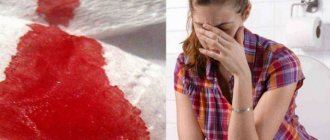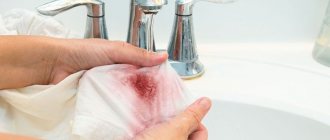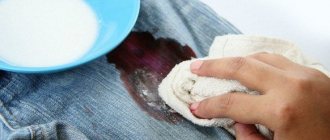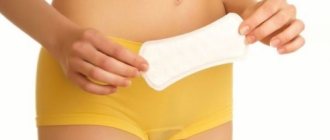Silicone baking dishes are safe for cooking, easy to use and take up little storage space. However, with frequent use, grease stains remain on silicone utensils and carbon deposits form. There are several methods to clean a baking dish with old stains, grease and carbon deposits. Maintenance rules will help extend the life of your baking tool.
Processing new forms
New dishes contain dust and other contaminants on the surface. Therefore, after purchase, you need to wash the container with dishwasher and a soft sponge. If the silicone has a persistent odor, then you need to soak the product in a solution with cold water and vinegar for 15-20 minutes. Then rinse and dry.
Recommendation!
Before cooking, the surface of new molds must be treated with sunflower oil. To do this, it is better to use a brush or spey dispenser.
Complex stains on silicone molds
If you have been using silicone molds for a long time, then you might be interested in knowing how to wash silicone molds from old grease and other stubborn stains?
Using liquid soap when cleaning silicone molds
There is a method that is well suited for removing old stubborn fat deposits, berry juice, and carbon deposits from the walls of dishes.
- 3 liters of water;
- 2 tbsp. l. soda;
- 3 tbsp. l. liquid soap.
Dissolve soap and baking soda in water and put on fire. It is necessary to boil the molds in the resulting soap solution for 5 minutes, then remove the container from the heat, leave the molds in the boiling solution for another 20 minutes, then remove, if necessary, rub the stains with a soapy sponge, rinse under running water and dry.
Vinegar essence for cleaning silicone molds
Sometimes housewives have a question: how to clean carbon deposits from a silicone mold? Try the following. Immerse the mold in hot water for 10 minutes; when it gets wet, clean it with a special cleaning paste made from soda slaked in vinegar. After soaping the molds with paste, leave them for 15-20 minutes, then rinse and dry.
There is another way. Both options are similar, choose the one you like best:
- 1 tbsp. l. baking soda;
- ½ tsp. vinegar essence;
- 2 liters of water.
Dissolve baking soda and vinegar in water, and as soon as the reaction begins, lower the molds into the sizzling solution. Leave them for 1 minute, then wash the molds with soap.
Water for preparing the solution
Here is one very unusual way to clean a silicone mold from burnt fat. Should be mixed:
- washing powder – 0.5 cups;
- unrefined sunflower oil – 0.5 liters;
- water – 3 liters.
This mixture is put on fire. First, you need to bring the solution to a boil; as soon as the water boils, reduce the heat (otherwise the liquid will foam heavily). Place the molds into the boiling solution and boil for 10-15 minutes. Then take them out and wash them with a sponge and soap. If the adhered fat still does not come off easily, repeat the boiling process.
Using bleach when caring for a silicone mold
This product is recommended for combating particularly complex stains that are resistant to standard cleaning methods, and the use of oil in boiling solutions has ancient roots. As it turned out, in the time of our grandmothers or even great-grandmothers, when there were not as many cleaning products as there are now, oil was considered an excellent bleach for fabrics.
Set of silicone baking molds
It was added to the water when the laundry was boiled, and the oil was as common and common a remedy as bleach is to us today. This folk recipe has one more advantage over modern bleach: oil added to a soap solution for boiling not only bleaches, but also does not damage the fabric.
Caring for silicone cookware
The recommendations described are an almost complete list of those necessary to comply with the rules for handling silicone baking molds. If the described rules are strictly followed, then beautiful and bright molds will serve you longer, helping in the process of creating culinary products that are impeccable in design and excellent in taste.
Washing powder for washing silicone molds
All that is required of you is to be careful and thrifty, as well as patience during the cleansing process. In addition, the recipes for cleaning liquids given in this article will be useful to you for cleaning other utensils in the kitchen.
Join the discussion! We would be interested to know your point of view, leave your opinion
Proper care
There are several tips for caring for baking equipment:
- When using the dishes for the first time, you need to rinse them with clean water, then dry them and spread them with oil;
- It is necessary to dry the container with the bottom up so that no water or traces of drying remain on the inner surface;
- before preparing food, it is worth rinsing and drying the container;
- after cooking, cool the dishes and wash them, carefully removing all contamination;
- dry forms should be stored in fabric bags in a drawer;
- When preparing dishes with berries, you should take dark dishes, because... stains from juice practically cannot be washed off, they only lighten over time;
- burnt pieces of dough or fatty foods or sauce should be removed by dry cleaning (baking soda);
- It is prohibited to use abrasive sponges and brushes to remove carbon deposits, as this will damage the surface;
- Do not use aggressive chemicals, because they are absorbed by the silicone and will subsequently end up in food.
Rules for caring for silicone molds
How to wash silicone baking molds so that they last as long as possible? You must adhere to the following rules:
- After purchase, the mold is washed in warm soapy water, dried with a paper towel and wiped with oil. This will protect the silicone from greasy deposits that may appear during cooking.
- Forms must be washed after each use. But only after the silicone has completely cooled.
- Silicone products are cleaned on both sides. Moreover, the inner part is bent outward twice to completely remove oil and traces of baking.
Important! Do not wash silicone molds with aggressive chemical compounds, as the material perfectly absorbs toxins. Using the form after such treatment can harm the human body.
Rules for washing molds after baking products
Silicone has a porous structure, which cannot be cleaned with a sponge and dishwashing gel. You can easily wash the mold from traces of baking if you first immerse it in hot water for 15 minutes.
While the container is soaking, you should prepare the cleaning paste. In a small bowl, stir together two tablespoons of baking soda and lemon juice. The resulting mass must be distributed over contaminated areas of silicone for 20 minutes. Then rinse with cool water.
Preventive measures
Even if there are no stains left on the containers and they seem clean, they need to be processed periodically, as dust settles on the walls of the molds.
Each time, dirt penetrates more and more into the internal structures of the surface - the mold becomes a breeding ground for harmful bacteria, and in the absence of preventive cleaning, it becomes covered with mold.
You can wash the baking dish with any liquid soap or dishwashing gel. Apply the product to a soft sponge, lather and thoroughly work the walls on both sides.
If there is stubborn dirt, soak the mold in warm soapy water. After washing, rinse the product under running water and dry.
The silicone form is easy to use. But in order not to damage the surface, follow all the instructions in the instructions.
How to remove fat
Old stains on silicone baking molds occur from grease, berry juice and pastries. To remove contaminants, do the following:
- pour water into a large bowl;
- pour in 3 tablespoons of dishwashing detergent;
- add two tablespoons of baking soda;
- dip the container into the liquid;
- place a bowl of liquid on the stove;
- boil the liquid for 5 minutes;
- remove from heat and cool for 20 minutes;
- take out the mold and rinse under running water;
- dry and store.
Advice!
Do not remove grease stains using aggressive cleaning products. These chemical liquids are toxic and do not completely wash out from porous surfaces. Therefore, toxins can get into food and harm your health.
How to remove old stains
After cooking fatty foods and sweets, silicone molds darken. You can effectively and quickly remove old stains in 1 minute using familiar products. To do this you will need to take baking soda and vinegar essence.
Liquid for removing old stains consists of:
- one tablespoon of soda;
- 1/2 teaspoon vinegar essence;
- 2 liters of hot water.
All components must be mixed, then immerse the baking container in the liquid. Wait one minute, then remove the dishes and rinse them in cold water. If desired, you can wash with detergent and water.
How to remove small stains around the edges
Silicone molds are not greased with oil, but the dough usually does not stick to them. Dishes that are not dirty inside should not be immersed in cleaning solutions; just take a dry cloth, make a paste of soda and brush the edges to remove fresh crumbs stuck to them. Old stains have to be soaked and only then wiped with a sponge.
If you don’t have time to clean silicone molds, you can put them in the dishwasher, but you need to carefully look to see if there is an authorization icon.
How to clean a nut baking pan
After cooking, traces of dough always remain on the silicone surface. You can keep your molds clean by removing fresh stains on your dishes. To do this you will need:
- one tablespoon of lemon juice;
- large bowl with 3-4 liters of hot water;
- place the baking container in the prepared solution;
- after 30 minutes, take out the silicone utensils, wash with soap and a sponge.
Advice!
If carbon deposits have formed, the baking equipment must be placed in hot water. Once the dirt has softened, it can be removed. Do not use sharp objects to remove carbon deposits.
Procedure
Soda and mustard powder must be mixed until smooth.
Add powder mixed with soda to the pan and add a drop of office glue.
If the frying pan is small and fits into the pan, then there is no problem.
And if it has a much larger diameter than the pan, then you should use a basin.
The water with the cleaning ingredients has boiled; all that remains is to pour it into a basin that fits the frying pan.
After this, any soot will easily come off the frying pan, no matter how strong and long-lasting it may be.
Although the method is not too fast, it will not require any effort from you.
After such a procedure, carbon deposits literally clear themselves from the surface of the dishes.
And after such a “bath”, the frying pan and other utensils will sparkle clean, like new.
Give
the article a thumbs up and SUBSCRIBE TO MY CHANNEL , we add recipes and useful housekeeping tips every day.
How to remove carbon deposits from silicone molds
Soot often occurs when roasting meat and when preparing sweet pastries. In order to remove stubborn dirt, you will need to prepare a mixture of:
- 3 liters of water;
- 1/2 cup sunflower oil;
- half a glass of cleaning powder.
Mix all ingredients and place on the stove. Place the molds into the liquid and boil for 10 minutes. Cool the liquid and rinse the baking equipment in clean cold water. This method is suitable even for removing dirt from light-colored surfaces.
Express cleaning of silicone
It also happens that you need to cook urgently, but the molds remain dirty after previous culinary experiments. In this case, the express method using baking soda and vinegar is suitable. It looks like this:
- Heat 2-3 liters of water in a saucepan and turn off the gas.
- Add ½ tbsp to the water. vinegar and a whole spoon of soda. When the water starts to bubble, immediately lower the muffin tins into it.
- After 1-2 minutes, the products are removed and washed. Old fat will completely disappear.
Important! Any vinegar you have at home will work for all recipes. But the effect will be more noticeable if you use natural vinegar with an acidity of 9%.
How to clean a silicone baking mat
Staining occurs on the surface of the mat, which spoils the appearance and may affect the preparation of other dishes.
You can get rid of stains with a mixture of:
- juice of 1/2 lemon;
- 2 tablespoons of baking soda;
- one teaspoon of cleaning powder.
Apply the resulting mixture to contaminated areas of the surface using a brush or sponge. Leave the product for 20 minutes, then rinse with cold water and a soft sponge. For cleaning, it is prohibited to use hard brushes or metal scrapers, which will damage the surface.
Elimination of unpleasant odor
Silicone molds, as a rule, do not absorb any odors, but if after cooking you still feel their presence, then ordinary vinegar will come to the rescue. You just need to add it (1-2 tablespoons) to cool water and keep the silicone baking dish there for half an hour. Afterwards, rinse under water with any commercial dishwashing detergent, or one made independently using mustard or laundry soap.
Prevention
You can preserve the color of silicone if you periodically soak the container in a solution of water, lemon juice and soda. This composition eliminates traces of soot and bad odors.
To prevent carbon deposits or stains from forming on the surface of the mat or mold, it is necessary to apply oil before cooking. This creates a protective layer that will make it easier to remove baked goods from the pan.
How to get rid of silicone smell
An unpleasant odor spoils the taste and aroma of the dish. You can eliminate an unpleasant odor using the following method:
- large container with cold water;
- two to three tablespoons of vinegar;
- place the silicone utensils in the liquid for half an hour;
- wash with soapy water and rinse with water.
If the smell still remains, the procedure must be repeated. This happens when dishes with garlic, onions or bright spices were prepared in dishes. After baking, the smell of vanilla and butter remains.
Features of the material
Artificial rubber is produced from quartz sand using a special technology. Food grade silicone is made from it, which at high temperatures:
- does not emit hazardous substances;
- does not react with other components;
- not deformed.
Kitchen utensils made of elastic material do not crack when heated to 220–230 °C. Baked goods in silicone molds do not burn, the walls do not require greasing before adding dough, and the product does not acquire an unpleasant odor. Kitchen utensils made of the following materials:
- has low weight;
- does not allow electricity to pass through;
- lasts a long time.
When removing pies or biscuits, the mold is easily turned inside out and the baked goods do not crumble. Silicone products can be easily rolled into a tube, folded in half, and take up minimal storage space.
Cupcakes bake faster in polymer pans than in metal or glass pans. Silicone has high thermal conductivity, which results in fluffy loaves; the dough in such a container does not shrink and bakes well even in large loaves.
Miniature and large, oval, round, rectangular shapes are made from elastic material.
Silicone accessories should not be placed on an open fire, but when taken out of the refrigerator, they can be immediately placed in a hot oven. The material not only withstands high temperatures, but does not deteriorate at -60 ° C. To clean polymer products, you should not use abrasives or aggressive chemical substances; it is not recommended to rub them with a brush, so as not to puncture them.
Adviсe
To ensure that silicone mats and baking dishes last a long time, you should follow these operating tips:
- wash only completely cooled containers;
- use only clean, dry and oiled utensils for baking;
- To remove dirt, do not use aggressive dishwashing detergents or hard sponges;
- use fabric bags for storage to prevent dust and other debris from falling onto the surface
Conclusion
If you follow all the rules for using molds and keep them clean, the dishes will last a long time. You can clean the surface with regular baking soda, citric acid or lemon juice, vinegar and water. No complications, only simple tips will help preserve the properties and appearance of baking utensils.
How do you like the article?










